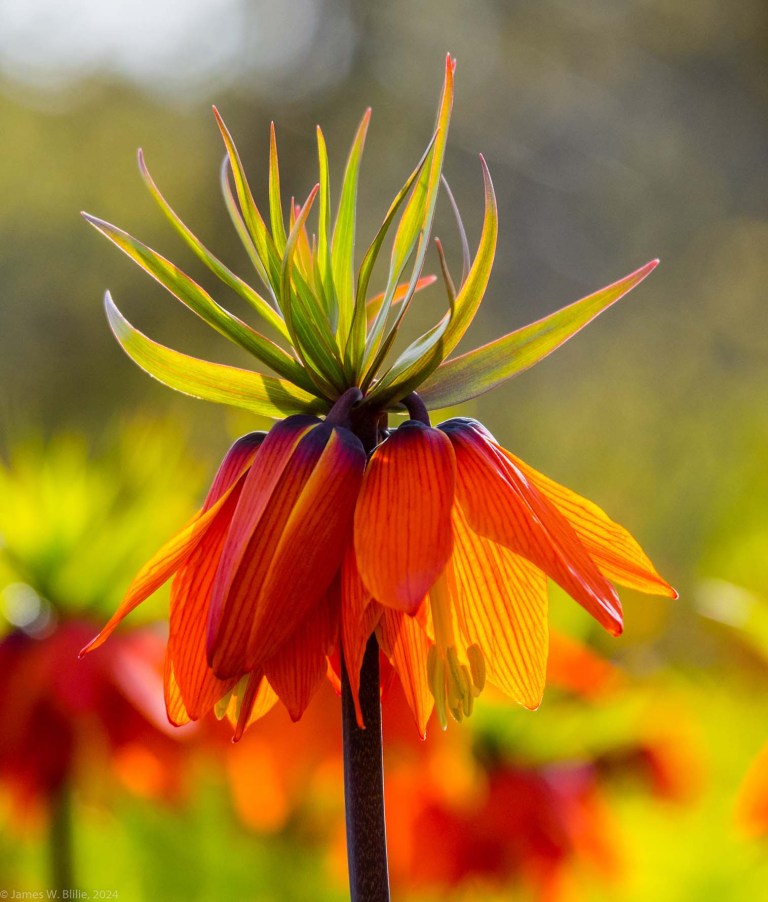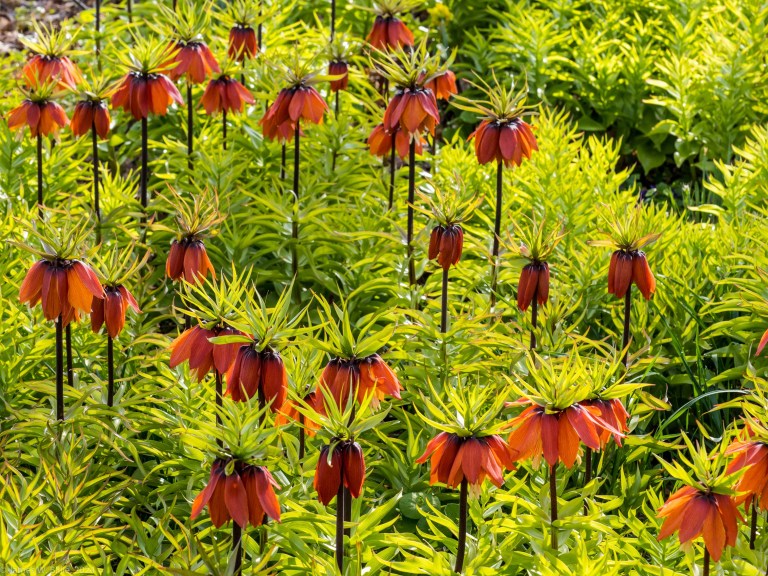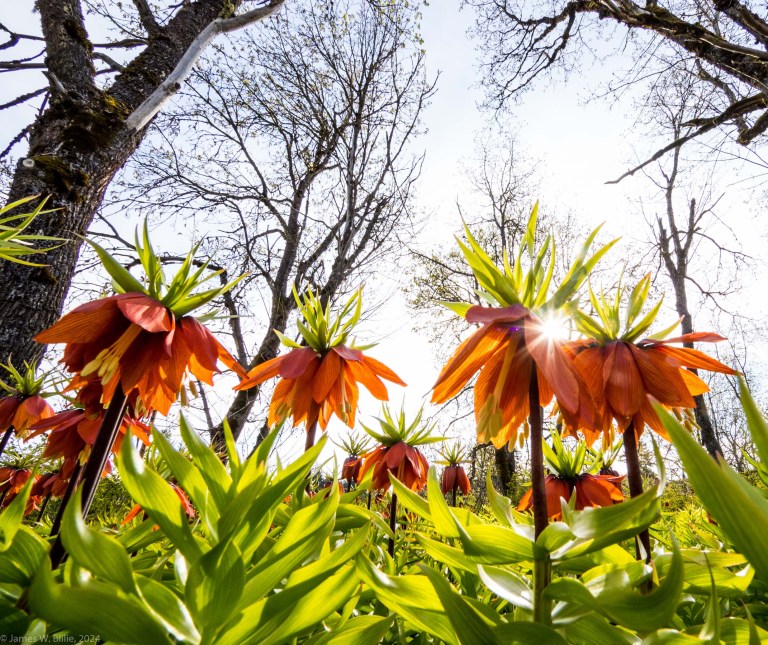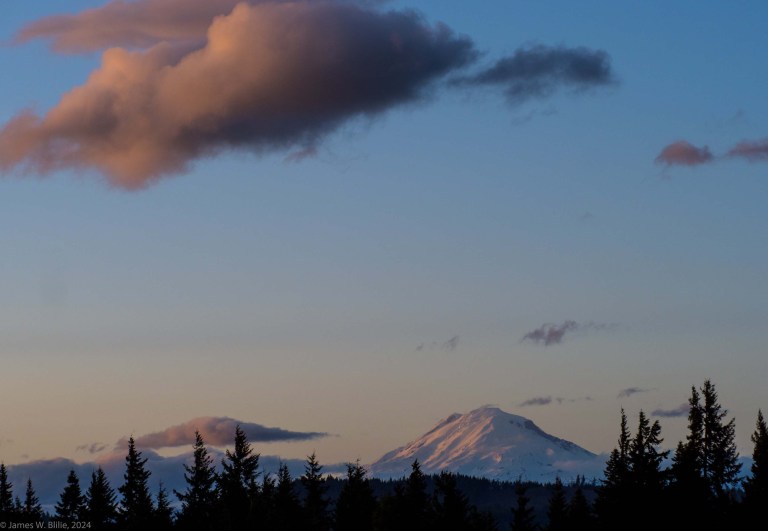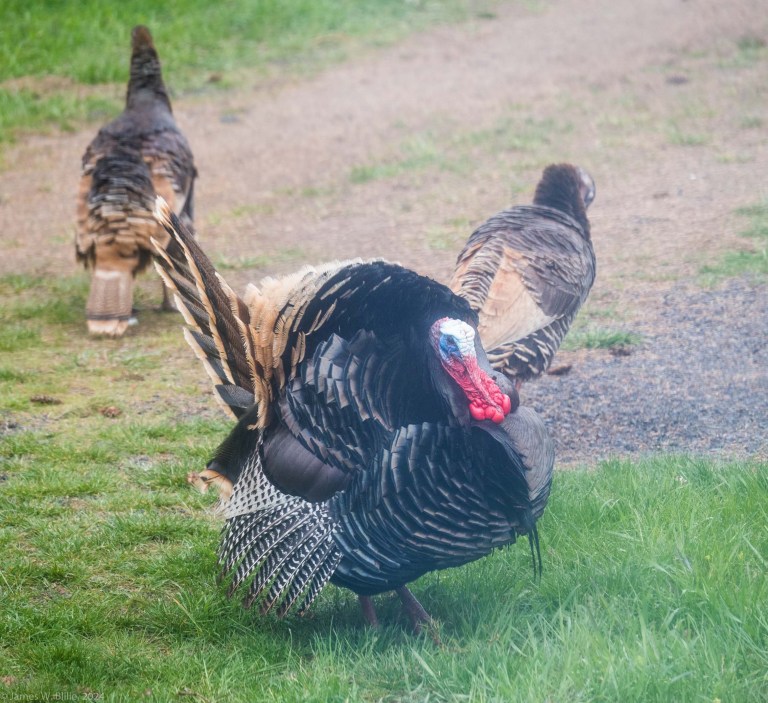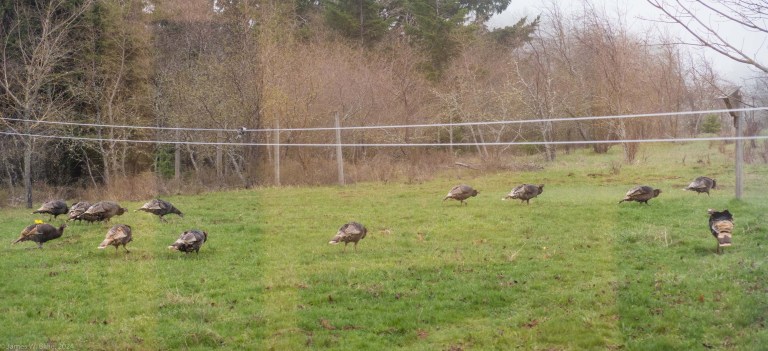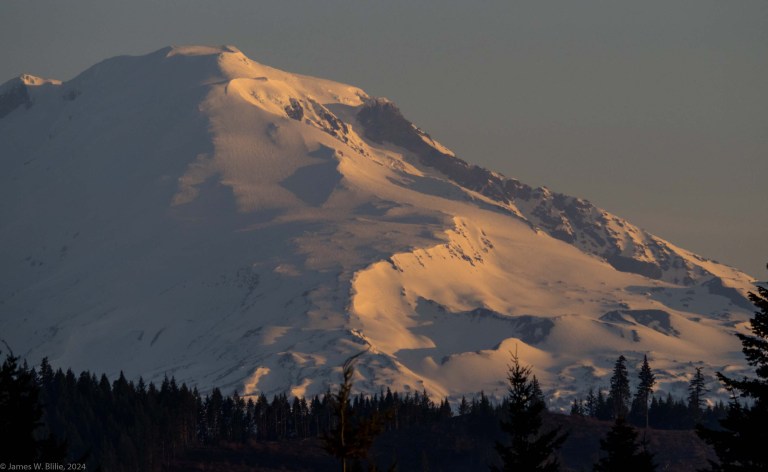Today we have photos from reader James Blilie, whose captions are indented. You can enlarge the photos by clicking on them.
Spring has sprung in southern Washington state, where we live. All of these are shot in our yard (or from our house).
We have a glorious showing of Empress Lilies Fritillaria imperialis that were (we assume) planted by a previous owner of the property. These flowers give a huge early spring show and then die back to the ground quickly. They smell strongly of skunk (very like skunk cabbage (Symplocarpus foetidus).
As Steve Simon (a photographer whose work I admire) says: Work the scene. And I did. Some of these photos will show some camera technique which I will try to highlight.
A close-up with a telephoto lens and large aperture to blur the background (short depth-of-field; bokeh):
Then two shots showing the effect of lens focal length:

In this shot, I am going for the framing of the scene by the tree trunks and branches and I am including Mount Adams in the background. A telephoto lens helps keep the foreground and background on a similar scale in the photo. A small aperture (f/8) helps keep it all in focus (enough).
Last of the Empress Lily photos is another wide angle shot where I got very low to look up into the bells of the flowers and I got very lucky to capture a sunburst as well (this was not planned; the other 3-4 shots did not have it; luck is your friend)
Next are two shots of Mount Adams at sunset from a few days ago.
Some local wildlife: A flock of wild turkeys (Meleagris gallopavo) with the Tom displaying for the ladies. (These are a little fuzzy and have glare because I shot them through our windows.)
More local wildlife: Early morning visit from our usual gang of Black-tailed Deer (Odocoileus hemionus), a sub-species of the Mule Deer (same binomial).
Early morning shots of our local mountains: Mount Adams and Mount Hood.
Olympus OM-D E-M5 (micro 4/3 mirrorless camera; crop factor = 2.0)
LUMIX G X Vario, 12-35MM, f/2.8 ASPH. (24mm-70mm equivalent, my walk-around lens)
LUMIX 35-100mm f/2.8 G Vario (70-200mm equivalent)
LUMIX G Vario 7-14mm f/4.0 ASPH (14-28mm equivalent)
LUMIX G Vario 100-300mm F/4.0-5.6 MEGA O.I.S. (200-600mm equivalent)

